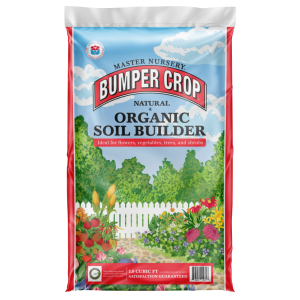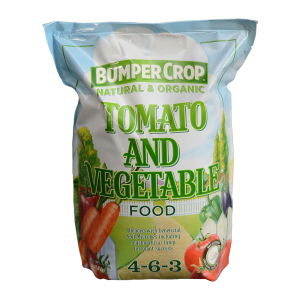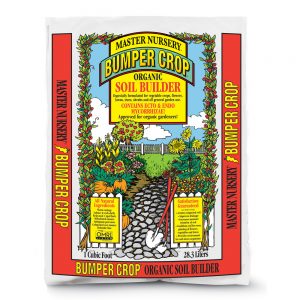Fresh vegetables don’t have to end as the days grow shorter – fall is a great time to harvest crops planted in mid to late-summer and picked right up to, and even beyond, the first frost, giving many areas of the country as much as eight months of home-grown veggies.
Starting
First, you’ll want to prepare the planting beds. Immediately pull out all early-season plants that have finished producing. Spade or till the soil to a depth of 6 to 8 inches, adding a generous amount of Master Nursery® Bumper Crop® Soil Builder [Eastern & Midwestern Regions | Western Region]. Apply the recommended amount of Master Nursery® Bumper Crop® Tomato and Vegetable Food to the area and rake the fertilizer lightly into the amended soil. The addition of these two exceptional organic products will provide adequate nutrition necessary to support rapid-growing fall veggies.
Selecting
When selecting which fall vegetables to plant, and when to plant them, you must first know your USDA Hardiness Zone and the suggested first frost date for your area. Knowing these details will help determine your planting deadlines so that tender crops have time to mature before the first frost hits. Seed packets are an invaluable resource providing not only the vegetable’s days to maturity, but also its hardiness, as some will tolerate cold better than others. Read seed packets before purchasing them to determine what will do best in your area, but don’t be put off by long lead times listed for greens. Most greens are tasty when they’re younger, too.
Specific varieties of the same vegetable may have distinctly different maturity windows. Look for varieties with the shortest days to maturity, listed on the seed packet. Here are some of the most popular fall veggies:
- Beets
- Broccoli
- Brussels Sprouts
- Bush Beans
- Cabbage
- Carrots
- Cauliflower
- Chard
- Collards
- Green Onion
- Kale
- Kohlrabi
- Lettuce Greens
- Mustard
- Parsnips
- Peas
- Radicchio
- Radishes
- Rape
- Spinach
- Turnips
- Winter Squash
Sowing
Each vegetable is unique and, again, this is where seed packets are important as they will provide you with the specifics on how deep to sow individual vegetable varieties and whether the plants should be direct sown or started indoors, require light or darkness to germinate, and so on.
Since fall gardens are summer-sown, it’s important to keep the soil moist and shaded until the sun is less intense and the temperatures are cooler. This will help prevent tender seedlings from becoming scorched. Planting densely, mulching the soil, and keeping the soil evenly moist will all contribute to the garden’s success.
When sowing fall greens, you may broadcast a mixture of seeds like mustard, kale, and rapeseed, or combine seeds of several types of lettuce like a curly leaf, red leaf, and oak leaf to allow you to harvest your salad already mixed. It works best to plant greens in blocks or wide rows, making them easier to harvest and allowing for fewer weeds. If you plant blocks each time a new space opens up, you’ll have staggered plantings that can produce over a long time.
Sustaining
Water after direct sowing seeds or transplanting seedlings into the garden bed and continue to keep the ground evenly moist. Seedlings may also need temporary shading from the strong mid-day sun. Until they are established, protect seedlings by shading them with a beach umbrella, pop-up canopy, or shade cloth draped over garden hoops.
Although insects tend to be less bothersome in late fall, it is still a good idea to scout for pests weekly and attend to them before they get out of control.
Harvest your fall vegetables as soon as the plants reach an edible size. Even after the first frost, you’ll be able to keep harvesting to enjoy the yield of your extended-season garden as most root crops taste even sweeter after being frost kissed.
Need more gardening inspiration? Click here.







